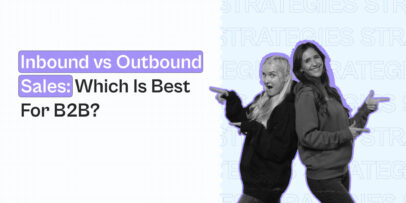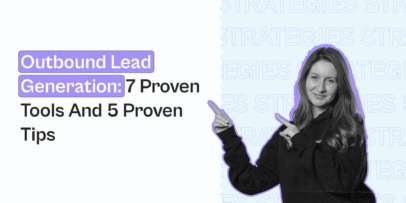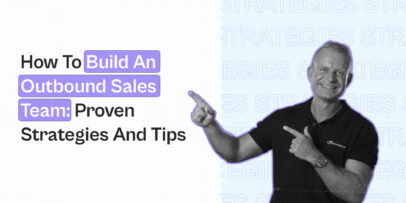4 Simple Steps To Generate More Leads On Linkedin In 2024
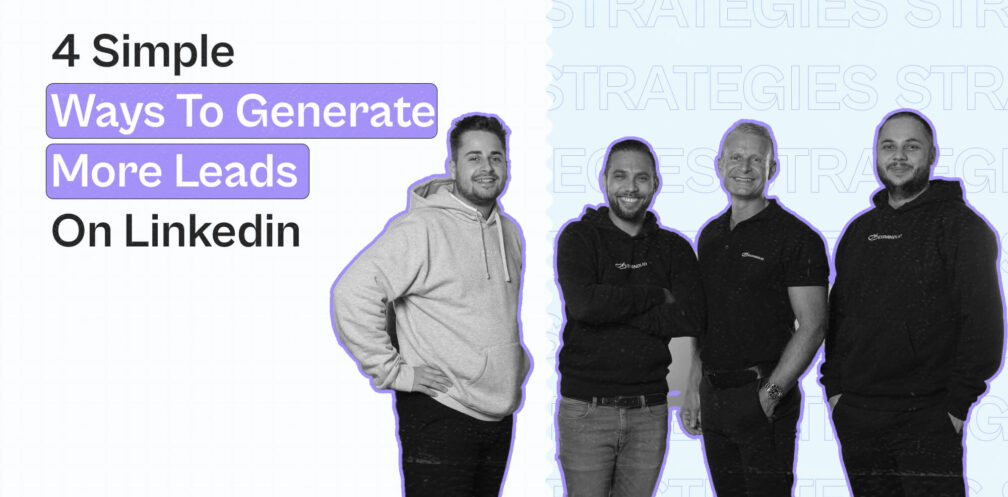
No matter the size of your company or how well your business is going, you should never stop focusing on lead generation.
Leads are the lifeblood of any business.
If you want to scale, you need more customers and ways to generate leads. It’s as simple as that.
And even if you’re doing well right now, you could always have clients who would be paying you more.
Or if someone decides to stop working with you, your business could be in serious danger.
That’s unless you’re always looking for ways to generate leads.
If you’re reading this, you probably already know how LinkedIn is ideal for B2B lead generation and email is still one of the most popular outreach channels.
So, if you want to generate more leads in 2024, we’re going to be focusing on what’s working now and what trends you should be focusing on in terms of your outreach moving forward.
Here’s what we’ll cover:
- Lead generation trends 2024: Top 3 things you need to know before you do outreach.
- 4-step LinkedIn outreach sequence and top ways to generate leads in 2024.
Lead Generation Trends 2024: Top 3 Things You Need To Know
Lead generation is constantly changing.
In the past, you could have set up LinkedIn automation and started connecting with hundreds of people per day.
Booking meetings with prospects is easy when you’re doing outreach at scale.
But now, that’s not the case anymore. Because of the LinkedIn connection limits you can now only connect with 100 people per week on the platform.
Does this mean LinkedIn isn’t as effective anymore?
Not really. Instead, the rules of lead generation are changing and you should be focusing on different things if you’re looking for more ways to generate leads.
The 3 main trends you should be focusing on when generating leads on LinkedIn in 2024 are as follows:
- Building relationships (without selling).
- Trigger-based lead generation.
- Omnichannel lead generation.
Let’s take a look at each B2B lead generation trend in detail and then how to apply them as part of your overall lead generation strategy.
1. Building relationships with your audience (or selling without selling)
Nowadays, it’s very common to receive up to hundreds of LinkedIn connection requests per day.
And as soon as you accept them, you receive an instant follow-up message, usually someone pitching you their services.
This is the wrong kind of way to generate leads through automation that we strongly discourage.
Instead, you should get to know your leads, without jumping into sales.
How does this work, exactly?
It’s simple.
You should have a well-defined ideal customer persona, and once you connect with them, you can follow up with nurturing, non-sales messages.
If you’re looking for ways to generate leads, you could:
- Ask them if they’re focusing on a specific marketing channel.
- If they’re facing common pain points associated with that persona.
- Compliment their latest content.
- And more.
This approach is focused on getting a conversation going, instead of trying to book a call with them straightaway.
Then, once you get to know your prospects, you can propose a solution based on what you know about them accordingly.
What makes LinkedIn so great for B2B lead generation as well is that you can go through their profile, learn about their company, and get an overview of what are some of their pain points.
Similarly, they’ll end up consuming your LinkedIn content (more on this below), which will make it easier for you to book a meeting with leads.
2. Trigger-based lead generation
Trigger-based (demand) lead generation is doing outreach based on a specific unique action or condition.
For example, you’d probably approach a startup founder who just received funding and someone who is looking for a new job differently, right?
That’s the idea here.
These triggers can vary depending on the industry, target audience, and their solution. Which is also why it’s a good idea to have your ICP defined.
But some examples of common sales triggers include:
- Change in leadership.
- Funding or investment.
- Mergers and acquisition.
- Regulatory changes.
- Technology upgrades.
- Suddenly hiring for different roles.
- Website or social media activity.
- Industry trends.
- And more.
Another example, let’s say you read on TechCrunch that a company just secured $154M in funding as part of their early-stage startup.
Then, you find the said company on LinkedIn and reach out based on this information (trigger) in mind.
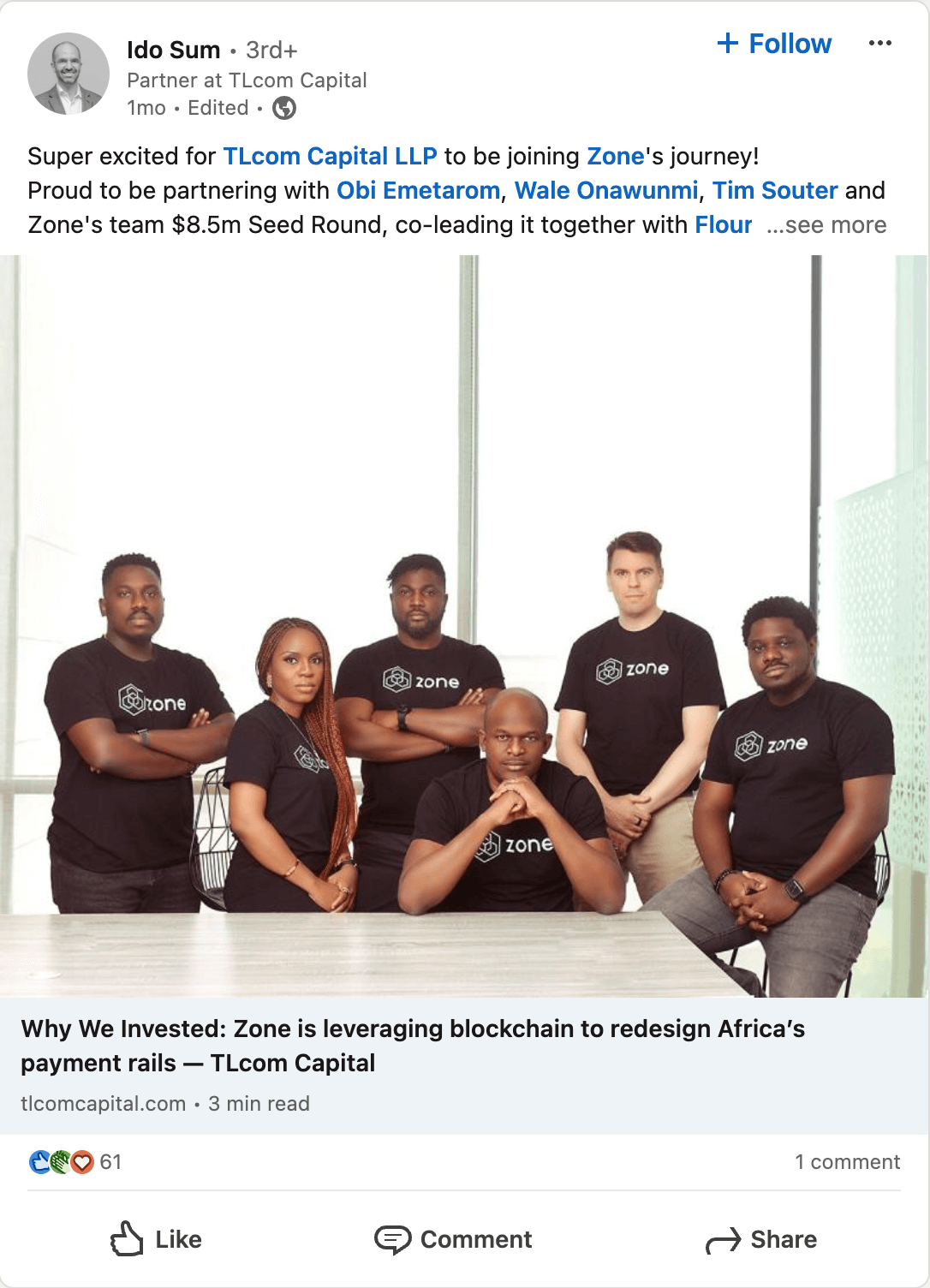
There are many different ways to generate leads overall.
Read on to learn how to find trigger-based lead generation ideas automatically within LinkedIn filters below.
3. Omnichannel lead generation
Last but not least, omnichannel lead generation is another great way to stand out when doing outreach in 2024.
As mentioned above, people are getting more LinkedIn connection requests and follow-up messages than ever because of automation.
So, how do you stand out?
Easy. You incorporate other channels as part of your omnichannel lead generation.
For B2B lead generation, for example, combining LinkedIn with email is ideal.
There are a lot of different ways you can approach this, you can:
- Send a connection request, an email if they don’t accept within a few days, and an InMail if they don’t reply.
- Pitch yourself by email first, follow up with a LinkedIn connection request, mentioning your email.
- And so on.
The best part is that this can be fully automated with tools like Expandi. All you have to do is set up your actions and conditions and import your target audience to target.

More on this later, let’s continue.
Now, let’s take a look at the steps we recommend following to implement the above tactics as part of your 2024 lead generation strategy
Your 4-Step LinkedIn Lead Generation Strategy For 2024.
If you’re looking for ways to generate leads in 2024, here are the 4 main steps we’ll cover below for your 2024 strategy.
- 1. Optimize your LinkedIn profile for your ideal customer persona.
- 2. Prospecting for your ideal clients on LinkedIn via filters and sales-related trigger events.
- 3. Crafting an outreach sequence that stands out (what elements to include).
- 4. Sending follow-up messages that get replies like clockwork (videos, voice-messages, and emails).
And by the end of it, you’ll have the exact steps, templates, and information you need to launch your 2024 lead generation strategy.
Let’s get started.
Step #1: Optimizing your LinkedIn profile for lead generation
Before you start with any kind of LinkedIn lead generation, you should first fully optimize your profile top-to-bottom.
Your LinkedIn profile is like your personal landing page.
So, whenever potential leads land on there, they should know:
- Who you are and what you offer.
- Who you help.
- Why they should work with you and how.
That means, you should optimize your:
- LinkedIn URL.
- Background photo (banner).
- Profile picture.
- LinkedIn profile headline (tagline).
- LinkedIn summary.
- Work experience.
- Education.
- Licenses and certificates.
- Skills and endorsements.
- And recommendations.
For a full guide on how to optimize each section, see our guide on improving LinkedIn profile tips.

You should also consider:
- Your LinkedIn content strategy. Whether leads are looking for a reason to connect with you or work with you, your content should position you as an expert in your niche and provide a reason for people to listen to you.
- Your lead magnet. To take this a step further, give your prospects free opt-in value. In exchange, you should get their email so that you can further nurture them and gauge interest as needed.
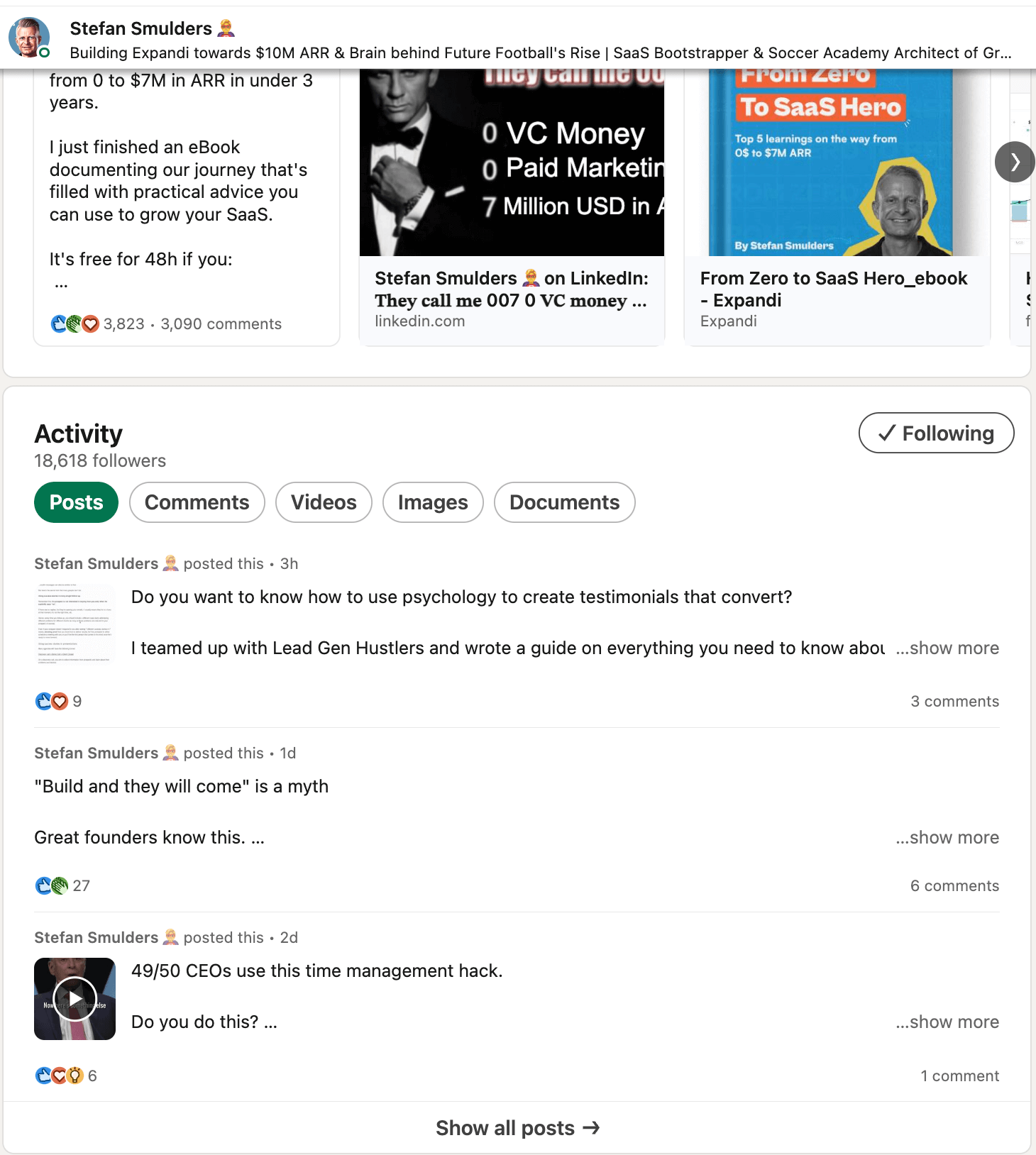
Step #2: Prospecting for ideal clients
This is one of the most important things to keep in mind when looking at ways to generate leads.
You could have the single best LinkedIn profile, product, or service, but if you’re targeting the wrong people – what’s the point?
So, for prospecting, we recommend starting with your ideal customer persona, scraping audiences, filtering, and segmentation.
When segmenting your audience, look at factors such as:
- Industry.
- Company type.
- Company size.
- Location.
- Pain points.
- Budget.
- Technologies.
For example, your ideal customer persona could be a marketing agency owner based in English-speaking countries with under 20 employees and numerous case studies (validated offer).
Then, to find audiences that fit within your ideal customer persona, you can use LinkedIn Sales Navigator. With the premium version of LinkedIn, you gain access to advanced filtering features such as:
- Company.
- Role.
- Buyer intent.
- Years of experience.
- LinkedIn groups they’re part of.
- Company attributes (approximate revenue, headcount, growth, etc.).
- Technologies used.
- Spotlight.
- If they’ve recently posted about a certain topic.
- And more.
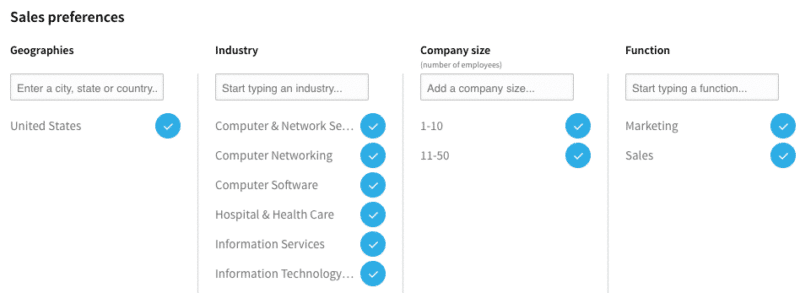
From there, you can copy the LinkedIn search URL, paste it into Expandi, and prepare your list for automated outreach.
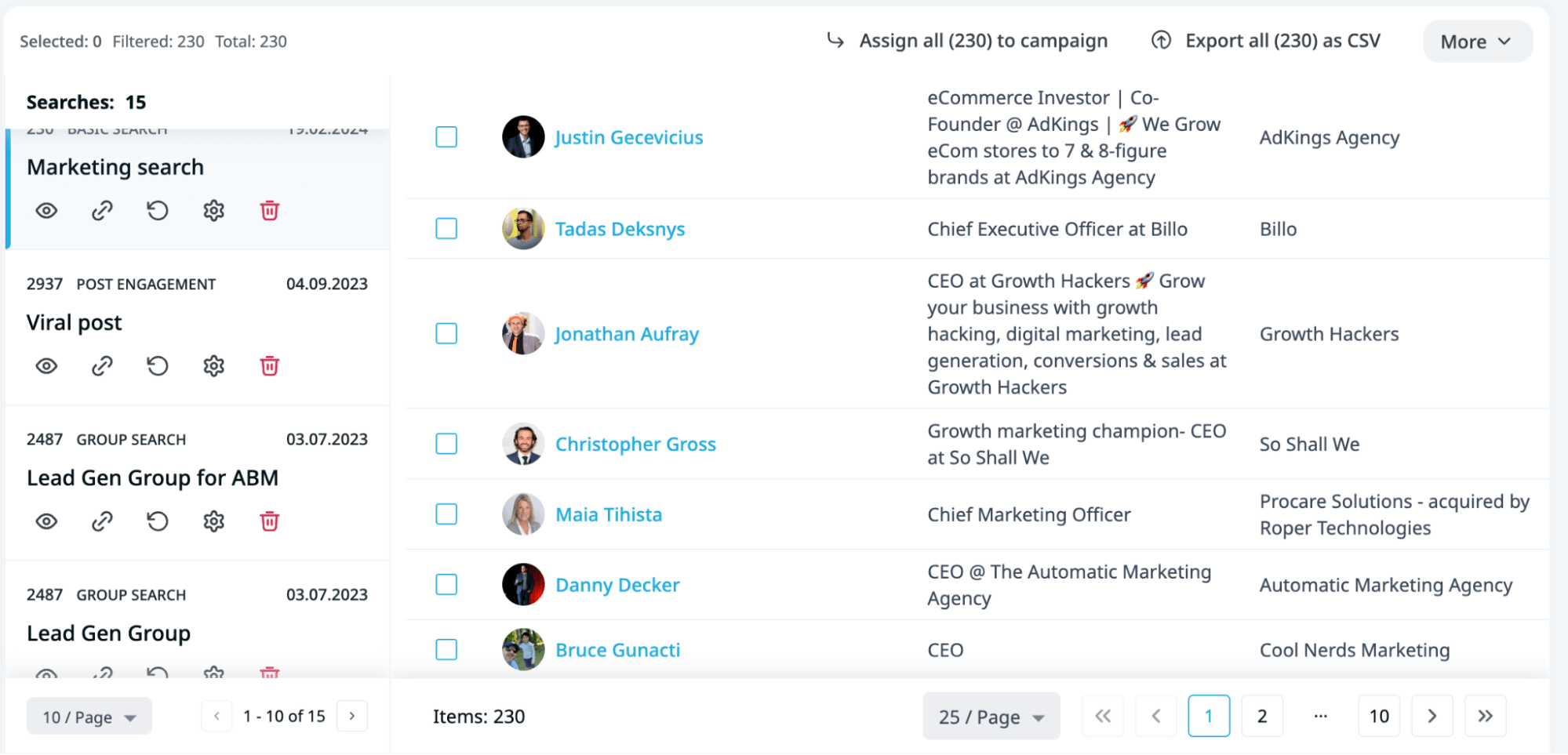
Alternatively, you can build out your outreach segmentation based on trigger events.
For B2B lead generation, there are several types of sales-related trigger events, such as:
- Targeting people who visit your website. The way this works is you target leads who have visited your website but didn’t opt in. To do this, you use lead generation and IP-address tracking tools, and reach out via email or LinkedIn.
- Targeting people who visited your LinkedIn profile but didn’t connect with you. If you’re creating a lot of content and connecting with new people, that means more and more people are visiting your profile. But not all of them are connecting with you. Fortunately, you can see who viewed your profile under “analytics” section and automatically connect with them. See a detailed overview in our inbound marketing funnel guide.
- Finding recently funded startups. You can use lead generation tools like Apollo to find companies with funding (seed, angel, series A, etc.) and automate your outreach with Expandi.
- Publicly available financial data. For example, Nathan Latka’s SaaS companies database which include company revenue, funding, valuation, cash flow, and other information.
- PR (public relations). Go through TechCrunch and keep an eye out for companies that have recently received funding or were featured in media publications.
Step #3: Messaging that stands out
Once you’ve identified companies to reach out to, you need to craft your outreach text in a way that stands out.
As a rule of thumb, try to include the following information in your outreach messages if you want to stand out and convey your pitch effectively, regardless of the lead generation platform.
- Hooks – You should include text that makes your outreach message stand out as early as possible. For example, your subject line could be “About your funding, (company_name)”, which personalizes your email based on the company name as well as the trigger.
- Reason to connect – What is the purpose of your outreach? Make sure to mention that explicitly. For example, this can be a call-to-action or a question, based on your objective.
- Be as direct as you can – Outreach text shouldn’t be long. Keep your outreach text concise and to the point. Avoid fluff and get straight to the reason for your message. A succinct and direct approach respects the recipient’s time and increases the likelihood of a positive response.
- Use personalization – Beyond just using the company’s name, tailor your message based on what you know about the company and the recipient. Mention specific challenges they might be facing, recent achievements, or common connections. This shows you’ve done homework and aren’t sending a generic pitch.
- Give them a reason to reply – Ensure your message includes a clear, compelling incentive for the recipient to engage with you. This might be an exclusive offer, a piece of high-value content, a personalized video audit, and more.
Putting all these together, here are a few sample LinkedIn outreach templates you can use here.
General template to customize:
“Hi {{name}},
Just saw the news about {{trigger event}}. Congrats!
Usually when this happens, {{insert value prop}} becomes a priority. So, I thought you might be interested in finding out how we helped {{similar company}} {{benefit}}.
I know things at {{company name}} must be crazy now, but If you’d like to learn more, let’s set up a quick call.
How does {{specific day and time}} look on your calendar? Alternatively, here’s a link to my calendar or feel free to send me yours.”
LinkedIn profile visit template:
Hey {{Name}], I hope you’re doing great. I noticed that you recently landed on my LinkedIn profile, and I’m curious to know if you found everything you’re looking for. And if you’re into it, I’d love to share a quick video on how your team can start more conversations with prospects on LinkedIn. So if that sounds interesting, let me know and I’ll send it over.
Fundraising template:
Hey there!
I just saw your fundraising announcement.
Congrats on your huuuge milestone!
From what I understand, you plan to hire new members worldwide. That’s super exciting!
I’m curious to know what solution you’re using to grow at scale? We’ve already helped
{{similarCompany}} and {{similarCompany}} to double their sales team while staying cost-
efficient. If you’re available, I would love to share insights on how you can do it too. What do you say?
Have a good one!
Step #4: Sending follow-ups that get replies
Last but not least, the purpose of your follow-ups is to get the prospect to reply.
Here are a few different ways you can do this.
Video message follow-ups with Sendspark
You might already be familiar with video audits and follow-ups, but Sendspark is a bit different than other video sales tools. As it allows you to send personalized sales videos at scale.
Following up with Sendspark’s personalized videos is easier than ever, because all you have to do is:
- Record one video going over your process or case study.
- Record a custom introduction for each prospect (e.g. greeting them by name, showing their website or LinkedIn profile, so on).
- Stitch it with your original video in a second, without having to re-record everything from scratch.
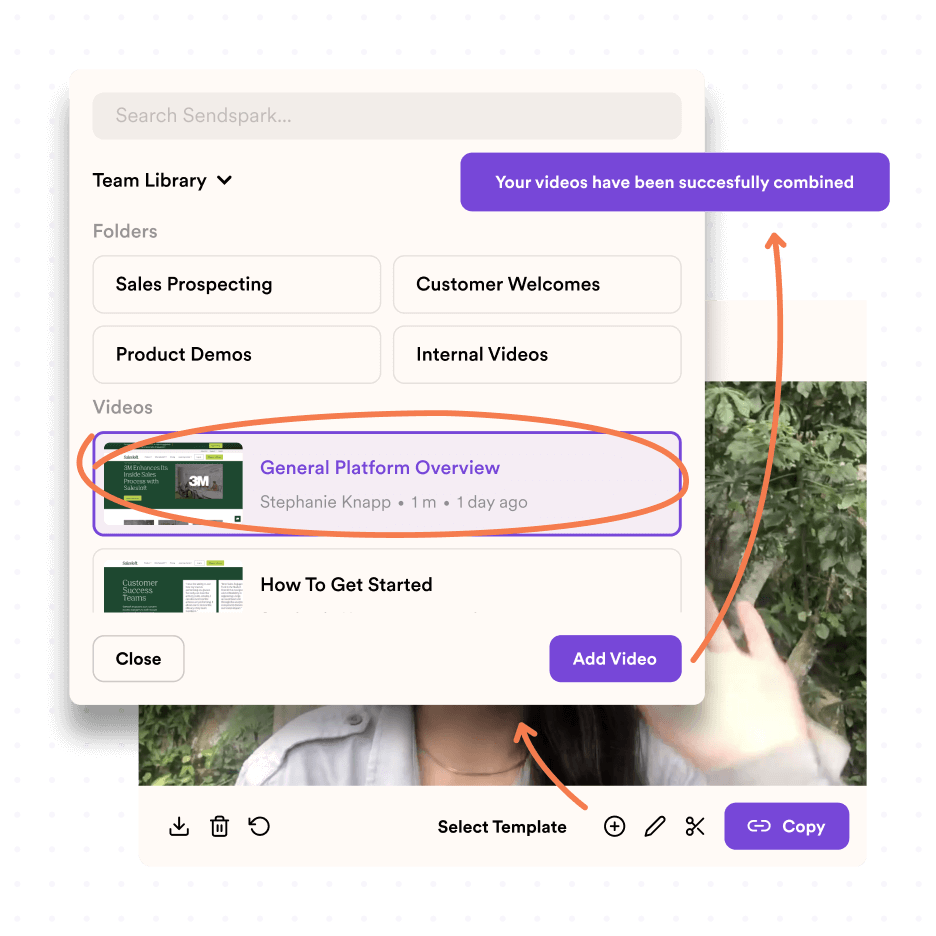
Potential Sendspark video follow-up template:
“Hey {first_name},
We just helped ProvokeAgency grow from $0 to $1.8M ARR in less than 2 years – booking 6 new demos and securing $250K within *just* 3 weeks using Expandi.
Want me to send over a 4-minute video showing what this might look like for you at {company_name}?”
From there, you could record a video talking about your:
- Processes.
- Case study.
- What people get wrong when doing outreach.
- And so on.
With Sendspark, you can record a video going over your processes or case studies once and be done with it. After doing that, you’d just record quick, 5-second intros for specific leads (addressing them by name/company name) and stitch them together.
LinkedIn voice message follow-up
If you’re doing automated outreach on LinkedIn, sending a voice message can be a game-changer.
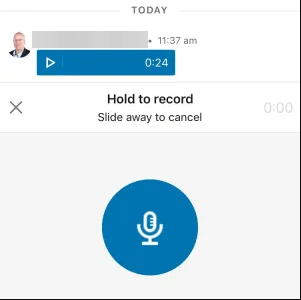
LinkedIn voice messages are 60-second voicemails you can send directly within the platform from your phone.
Done well, they can be a great way to stand out in your prospect’s inbox because they’re not as common and can’t be automated. This might seem time-consuming for you, but it also shows the prospect that it’s specifically made for them.
To use LinkedIn voice messages successfully make sure you:
- Use a free online app to test and record to see what your voice sounds like with your microphone.
- Do NOT start a conversation immediately with a voice message, because the prospect doesn’t know you well yet, and might not care enough to listen.
- Be clear and concise. Try to keep your voice messages under 50 seconds, otherwise prospects might be too lazy to listen all the way.
- Smile and sound interested, remember, they can tell by your tone.
Email follow-ups
Last but not least, you can also follow up by regular email.
The key here though, is to follow up with different information and objectives, instead of asking prospects if they’ve read your email yet.
You could follow up with:
- Your latest case study.
- Information on how you solve client pain points.
- Video audits.
- And more.
Here’s a sample follow-up email template.
“Hey {first_name},
You probably already know that personalization is key when doing outreach.
But what most people get wrong when doing cold outreach is that they have difficulty nailing their offer.
We helped (client) skyrocket their reply rate all the way up to 55% this way.
If you’re interested in getting similar results, we can:
– Get on a quick, 10-minute, no-strings-attached Zoom call.
– Or I can send over a 5-minute Loom going over my process.
Which one do you prefer?”
Where To Go From Here
Congratulations on completing the 4-step sequence to enhance your lead generation efforts in 2024!
By now, you should have a comprehensive understanding of the latest trends and strategies to effectively generate leads and nurture them into clients.
To recap, the sequences we covered based on the lead generation trends of 2024 include:
- Optimizing your LinkedIn profile for lead generation based on your ideal clients.
- Prospecting strategically through advanced filtering and sales-related trigger events such as targeting people who visited your website, using publicly available financial data, finding funded startups, and more.
- Crafting your outreach text in a way that stands out and gives prospects a reason to reply.
- Sending follow-ups that get replies (personalized video messages, voice-messages, valuable emails).
Finally, if you’re looking to automate your outreach and lead generation, be sure to grab the free, 7-day Expandi trial here!
With it, you can launch your first omnichannel campaign (using LinkedIn and email) in under 20 minutes and start seeing results in 24 hours.
So, the free trial would be more than paying for itself!
You’ve made it all the way down here, take the final step
